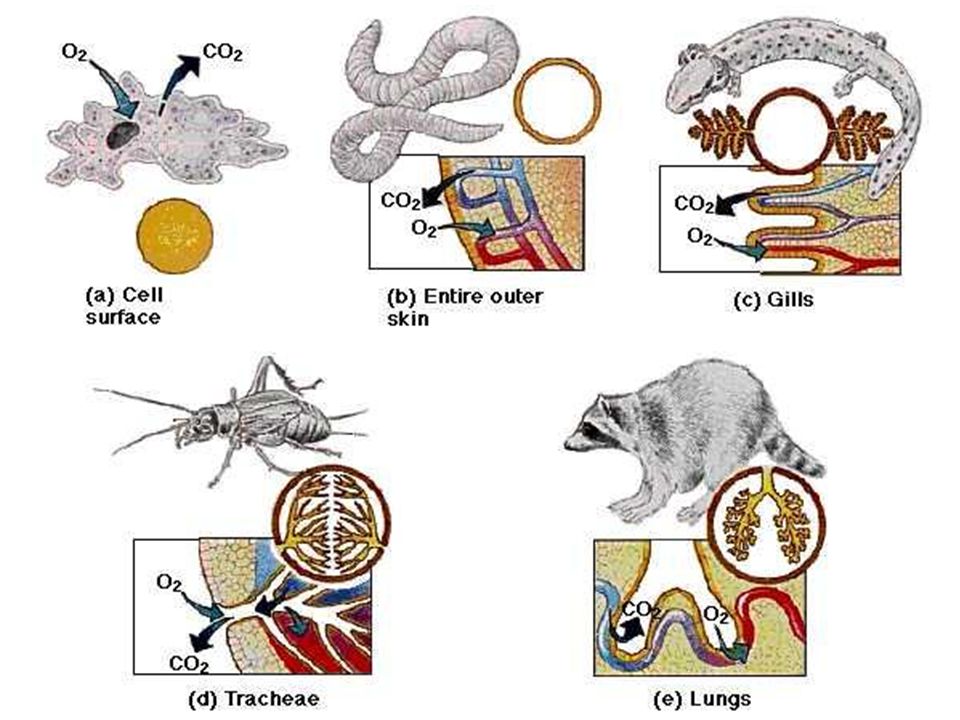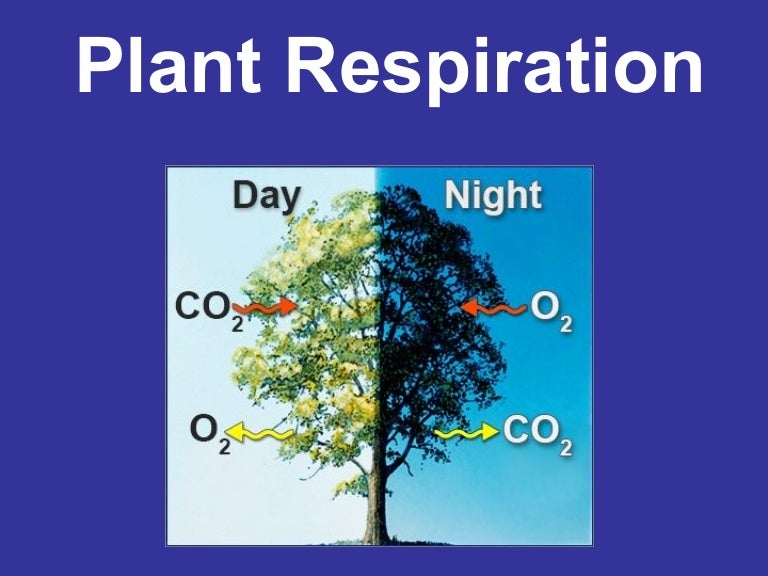Respiration
What is Respiration?

The process of respiration involves taking in oxygen (of air) into the cells, using it for releasing energy by burning food, and then eliminating the waste products (carbon dioxide and water) from the body.
- The process of respiration which releases energy takes place inside the cells of the body. So, it is also known as cellular respiration.
- Respiration is essential for life because it provide energy for carrying out all the life processes which are necessary to keep the organism alive.
Respiration is a metabolic process common to all living things. When you hear the word ‘respire,’ you probably think of breathing. When you breathe, you are taking in oxygen with each inhale and releasing carbon dioxide with each exhale. This gas exchange is important for respiration, but while breathing is a physical process, respiration can be thought of as more of a chemical process. All organisms, from a single bacterial cell to a coral reef colony to a blue whale, undergo respiration.
Food molecules absorbed after digestion are taken in, broken down, and the energy freed in the process is used to power the organism’s movements and physiological functioning. Respiration is the biochemical process in which the cells of an organism obtain energy by combining oxygen and glucose, resulting in the release of carbon dioxide, water, and ATP (the currency of energy in cells).
How Energy Released during Respiration is Stored:
- The energy produced during respiration is stored in the form of ATP molecules in the cells of the body and used by the organism as when required.
- ADP (Adenosine Di-Phosphate, low energy content), Inorganic Phosphate (Pi) and ATP (Adenosine Tri-Phosphate, high energy content) are the substances present inside a cell.
- The energy released during respiration is used to make ATP molecules form ADP and inorganic phosphate.
- Thus, energy is stored in the form of ATP.
- When the cell needs energy, then ATP can be broken down using water to release energy. Thus:
- The energy equivalent to 30.5KJ/mole is released in this process.
- ATP is known as energy currency of cells.
Types of Respiration:
In most of the cases, the organisms carry out respiration by using oxygen. There are, however some organisms which carry out respiration without using oxygen. Based on this, we have two types respiration:
- Aerobic respiration
- Anaerobic respiration
Aerobic Respiration:
- The respiration which uses oxygen is called aerobic respiration.
- In aerobic respiration, the glucose food is completely broken down into carbon dioxide and water by oxidation.
- Aerobic respiration produces a considerable amount of energy for use by the organism which gets stored in the ATP molecules.
- Mitochondria are the sites of aerobic respiration in the cells. Thus, the breakdown of pyruvate to give carbon dioxide, water and energy takes place in mitochondria.
Anaerobic Respiration:
- The respiration which takes place without oxygen is called anaerobic respiration.
- The microscopic organisms like yeast and some bacteria obtain energy by anaerobic respiration (which is called fermentation).
- In anaerobic respiration, the microorganisms like yeast break down glucose (food) into ethanol and carbon dioxide, and release energy.
- Anaerobic respiration produces much less energy which gets stored in the ATP molecules.
- Sometimes, when there is lack of oxygen in our muscle cells, another pathway for the breakdown of pyruvate is taken. Here the pyruvate is converted into lactic acid (which is also a three-carbon molecule) with the release of small amount of energy.
Respiration in Animals
Different animals have different modes of respiration.
| Animals | Respiratory organ |
| Unicellular animals like Amoeba, Planaria | Cell membrane |
| Earthworm | Skin |
| Aquatic animals like Fish, Prawns | Gills |
| Insects like Grasshopper, Cockroach | Spiracles and tracheae |
| Land animals like Humans, birds | Lungs |

All the respiratory organs have three common features:
- All the respiratory organs have a large surface area to get enough oxygen.
- All the respiratory organs have thin walls for easy diffusion and exchange of respiratory gases.
- All the respiratory organs like skin gills, and lungs have a rich blood supply for transporting respiratory gases.
- Terrestrial animals can breathe the oxygen in the atmosphere, but animals that live in water (aquatic animals) need to use the oxygen dissolved in water.
- Since the amount of dissolved oxygen is fairly low compared to the amount of oxygen in the air, the rate of breathing in aquatic organisms is much faster than that seen in terrestrial organisms.
Respiratory system in Humans 
- In human beings, many organs take part in the process of respiration. These organs are called organs of respiratory system.
- The main organs of human respiratory system are: Nose, Nasal passage, Trachea (wind pipe), Bronchi, Lungs and Diaphragm.
- The human respiratory system begins from the nose. The air then goes into nasal passage. The nasal passage is lined is lined with fine hair and mucus.
- When air passes through the nasal passage, the dust particles and other impurities present in it are trapped by nasal hair and mucus so that clean air goes into lungs.
- The part of throat between the mouth and wind pipe is called pharynx.
- From the nasal passage, air enters into pharynx and then goes into the wind pipe. Trachea does not collapse even when there is no air in it because it is supported by rings of soft bones called cartilage.
- The trachea runs down the neck and divides into two smaller tubes called bronchi at its lower end.
- The bronchi are connected to the two lungs. The lungs lie in the chest cavity or thoracic cavity which is separated from abdominal cavity by a muscular partition called diaphragm.
- Each bronchus divides in the lungs to form a large number of still smaller tubes called ‘bronchioles’.
- The pouch-like air sacs at the ends of the smallest bronchioles are called alveoli.
- The walls of alveoli are very thin and they are surrounded by very thin blood capillaries.
- It is in the alveoli that gaseous exchange takes place.
Mechanism of Respiration:
- When we breathe in, we lift our ribs and flatten our diaphragm. And the chest cavity becomes larger as a result. Because of this, air is sucked into the lungs and fills the expanded alveoli.
- The alveoli are surrounded by thin blood vessels called capillaries carrying blood in them. So. The oxygen of air diffuses out from the alveoli walls into the blood.
- The oxygen is carried by blood to all the parts of the body. As the blood passes through the tissues of the body, the oxygen present in it diffuses into the cells.
- The oxygen combines with the digested food present in the cells to release energy.
- Carbon dioxide gas is produced as a waste product during respiration in the cells of the body tissues. This carbon dioxide diffuses into the blood.
- Blood carries the CO2 back to the lungs where it diffuses into the alveoli.
- When we breathe out air. The diaphragm and muscles attached to the ribs relax due to which our chest cavity contracts and becomes smaller. This contraction movement of the chest pushes out CO2 from the alveoli of lungs into the trachea, nostrils then out of the body into air.
- Note: During the breathing cycle, when air is taken in and let out, the lungs always contain a residual volume of air so that there is sufficient time for oxygen to be absorbed and for the carbon dioxide to be released.
- Carbon dioxide is more soluble in water than oxygen is and hence is mostly transported in the dissolved form in our blood.
Rate of breathing:
- The process of breathing pumps in oxygen into our body (and removes CO2).
- Breathing occurs involuntarily but the rate of breathing is controlled by the respiratory system of brain.
- The average breathing rate in an adult man at rest is about 15 to 18 times per minute. This breathing rate increases with increased physical activity.
- Oxygen required for breathing and respiration is carried by haemoglobin pigment present in our blood. The normal range of haemoglobin in the blood of a healthy adult person is from 12 to 18 grams per deciliter of blood.
- The deficiency of haemoglobin in the blood of a person reduces the oxygen carrying capacity of blood resulting in breathing problems, tiredness and lack of energy.
Respiration In Plants
Like animals, plants also need energy. The plants get this energy by the process of respiration. Plants also use oxygen of air for respiration and release carbon dioxide.


The respiration in plants differs from the animals in three respects:
| Respiration in plants | Respiration in animals |
| All the parts of a plant (like root, stem and leaves) perform respiration individually. | An animal performs respiration as a single unit. |
| During respiration in plants, there is a little transport of respiratory gases from one part of the plant to the other. | Respiratory gases are usually transported over long distance inside an animal during respiration. |
| The respiration in plants occurs at a slow rate. | The respiration in animals occurs at a much faster rate. |
Plants get Oxygen by Diffusion:
Plants have a branching shape, so they have quite a large surface area in comparison to their volume. Therefore, diffusion alone can supply all the cells of the plants with as much oxygen as they need for respiration. Diffusion occurs in the roots, stems and leaves of plants.
Respiration in Roots:
- Air occurs in soil interspaces. Root hairs of the roots are in direct contact with them.
- Oxygen of the soil air diffuses through root hair and reaches all internal cells of the root for respiration.
- Carbon dioxide produced by root cells diffuses in the opposite direction.
- In water-logged conditions, soil air becomes deficient. In the absence of oxygen, metabolic activity of the root declines and the plant may wither.
Respiration in Stems:
- The stems of herbaceous plants have stomata. The oxygen from air diffuses into the stem of a herbaceous plant through stomata and reaches all the cells for respiration.
- The carbon dioxide gas produced during respiration diffuses out into the air through the same stomata.
- In woody stems, the bark has lenticels for gaseous exchange.
Respiration in Leaves:
- The leaves of a plant have tiny pores called stomata. The exchange of respiratory gases in the leaves takes place by the process of diffusion through stomata.
Net gaseous exchange in the leaves of the plant:
During day time, when photosynthesis occurs, oxygen is produced. The leaves use some of this oxygen for respiration and rest of the oxygen diffuses out into air.
- Again, during the day time, carbon dioxide produced by respiration is all used up in photosynthesis by leaves. Even more carbon dioxide is taken in from air.
- Thus, net gas exchange in leaves during day time is: O2 diffuses out ; CO2 diffuses in.
At night time, when no photosynthesis occurs and hence no oxygen is produced, oxygen from air diffuses into leaves to carry out respiration. And carbon dioxide produced by respiration diffuses out into air.
- Thus, net gas exchange in leaves at night is: O2 diffuses in; CO2 diffuses out.
